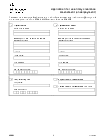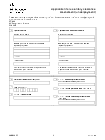Apply for a voluntary clearance amendment (underpayment) (C2001)
Tell HMRC about voluntary underpayments arising on import of goods.
Who should claim
Use the C2001 to make a voluntary disclosure of underpayments arising on the import of goods. This will result in a charge (C18) being raised for the extra duty or VAT due.
If you account for import VAT on your VAT Return you should not use the C2001.
If postponed VAT accounting (also known as method of payment type ‘G’) was selected as the method of payment on the original import declaration, you should account for the underpaid import VAT on your VAT Return. Do not use this service, even if this payment method was selected in error.
You can make adjustments on your VAT Return.
What you’ll need
If you use the Customs Handling of Import and Export Freight (CHIEF) system to import
You’ll need certain information. For the customs procedure code, this includes:
- the original customs procedure code
- the revised customs procedure code, if it’s changed
- details of the amendment
You’ll need the name, address, email address, telephone number and VAT registration number of the:
- importer
- representative
For the commodity code, you must include the:
- item number
- box number
- entry number
- amended entry number
You’ll also need any underpayment details such as the amount of any duty or VAT paid already. In addition, you’ll need details of any:
- amount of duty or VAT owed to HMRC
- other amounts paid
- other amounts owed to HMRC
If you use the Customs Declaration Service to import
You’ll need certain information for procedure codes, this includes:
- the original procedure code and additional procedure codes
- the revised procedure code and additional procedure codes, if changed
- details of the amendment
You’ll need the name, address, telephone number and EORI number of the:
- importer
- representative
For the commodity code, you must include the:
- item number
- data element number
- movement reference number (MRN)
You’ll also need any underpayment details such as the amount of any duty or VAT paid already. In addition, you’ll need details of any:
- amount of duty or VAT owed to HMRC
- other amounts paid
- other amounts owed to HMRC
How to apply
Make sure you have all your necessary documents and files ready to submit with your disclosure.
If you used CHIEF to import
You can apply using our C2001 online service Tell HMRC about an underpayment of Customs Duty or import VAT service.
If you decide not to use the online service you can apply using form C2001.
If you used Customs Declaration Service to import
You’ll need to apply using form C2001-CDS.
Updates to this page
-
A Welsh version of C2001 CDS form has been added.
-
The C2001CDS form has been updated.
-
Forms C2001 and C2001CDS have been updated.
-
We have updated the PDF document titled ‘C2001CDS’
-
The C2001 has been updated with a field for importers and representatives to input email addresses.
-
Information about how you can apply for a voluntary clearance amendment (underpayment) if you use CHIEF to import goods has been updated.
-
The C2001CDS form has been updated and a Welsh translation of the guide has been added.
-
The C2001 and C2001CDS forms have been updated.
-
We have updated the page to confirm that if you account for import VAT on your VAT return you should not use form C2001. You can make adjustments on your VAT return.
-
First published.

